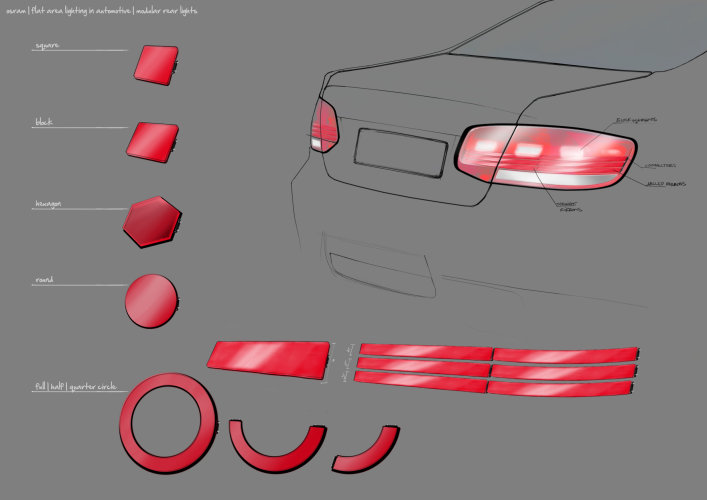Osram achieves major step toward future automotive lighting

Temperature stability record for area light source OLED
The lighting manufacturer Osram has taken a major step toward organic light-emitting diodes (OLEDs) that are suitable for automotive applications. For the first time the company has developed an OLED that proved capable of withstanding temperatures of up to 85 degrees Celsius for several hundred hours in a laboratory long-term test. Temperature stability is the biggest challenge when it comes to making these innovative surface area light sources suitable for use in cars. "Since the success of this research we’re now tackling their future application in production vehicles", says Ulrich Eisele, responsible for the OLED business segment at Osram. "As the automotive industry plans and develops its future designs a long time in advance, we have to be involved today to help create the car of tomorrow."
Light is becoming an increasingly important factor for automotive design. While, up until a few years ago, manufacturers stressed the importance of a car’s shape more than anything, these days almost every make has its own distinctive “light face” – brought about by the aid of light diodes (LEDs). Already, every second new car is equipped with Osram LEDs. To initiate further unique “bright” selling points, experts anticipate that in addition to point light source LED the related OLED technology will become an integral part in cars. OLEDs are surface light sources. The vast majority of lighting applications in cars requires surface light – especially lighting applications which serve visibility in road traffic such as indicators, rear lights or interior lighting. Osram has already come up with specific designs in collaboration with UnternehmerTUM, the center for innovation and business creation at the Technische Universität München.
The biggest challenge in developing organic light-emitting diodes for automotive applications is temperature stability. So as to be suitable for use in cars, OLEDs have to meet manufacturer specifications. In rear lights, for example, they must withstand temperature peaks of up to 85 degrees Celsius or even higher. When the first OLED products for lighting applications were introduced almost three years ago, they were temperature-resistant for no more than two to three hours. With its record-breaking OLED Osram has outdone this temperature resistance by a factor of a hundred. A further tenfold increase will make the first applications in automobiles viable. The current development is targeted in such a direction as anticipates this increase within the next few years. As cars are developed several years in advance, OLED elements may therefore be included in plans for the next automotive generations.
ABOUT OSRAM
OSRAM AG (Munich, Germany) is a wholly-owned subsidiary of Siemens AG and one of the two leading light manufacturers in the world. In fiscal year 2011 (ended September 30, 2011), it generated revenue of about 5 billion Euros. Osram is a high-tech company in the lighting sector and more than 70 percent of its revenue comes from energy efficient products. The company, which is very much internationally oriented, has around 41,000 employees worldwide, supplying customers in 150 countries from its 44 production sites in 16 countries (as of September 30, 2011). Additional information can be found in the internet at www.osram-group.com.